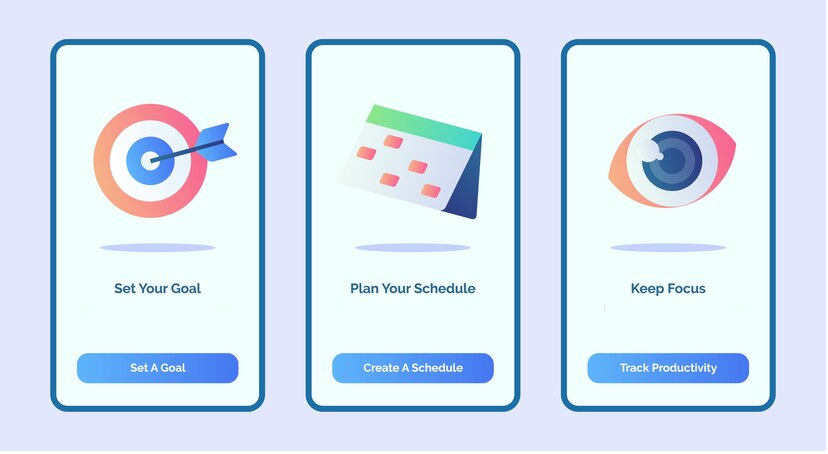Creating a Content Calendar
A well-planned content calendar is the foundation of a successful content strategy.
Creating and consistently providing interesting, engaging, and relevant content to potential and current customers can be a daunting task for copywriters.
Despite having a team of talented writers and tech-savvy social media experts, the pressure to constantly generate new and fresh content can be overwhelming. One solution to this challenge is to implement a content calendar.
A content calendar, sometimes referred to as an “editorial calendar,” is a written plan that outlines when and where you intend to publish your upcoming content. This typically includes items like future content pieces, status updates, promotional activities, collaborations, and updates to existing content.
Contents
Understanding the Different Types of Content

Creating a variety of content can help keep your audience engaged and coming back for more. Incorporating different forms of content, such as blog posts, videos, podcasts, images and graphics, and social media posts, can help you reach a wider audience with your marketing message. Mixing up the format of your content can also make it more interesting and dynamic.
Variety is the Spice of Blogging
Blog posts come in many forms and can serve different purposes for the audience. Some examples include:
- How-to guides: Step-by-step instructions on a specific topic or task.
- Example – How to Build a Brand From Scratch
- Opinion pieces: Articles that express a writer’s thoughts, feelings, and beliefs on a particular issue.
- News and updates: Posts that provide timely information on current events or developments within a particular industry or community.
- Example – An important next step on our AI journey
- Interviews or case study: Conversations with experts, influencers, or thought leaders, aimed at providing insights and unique perspectives.
- Product reviews: Evaluations of products or services, written with the intent to inform and help readers make informed decisions.
- Example – Micro-SaaS ideas and trends in 2024
By providing a mix of these different types of content, you can cater to the diverse needs and interests of your blog audience and deliver valuable and engaging posts.
The Importance of Including Videos in Your Content Calendar
Videos are a powerful way to engage and connect with your audience, as well as to share information in a more dynamic and entertaining way.
Including videos in your content calendar allows you to:
- Showcase your products or services
- Provide educational content
- Share customer testimonials
- Increase brand awareness
When planning and organizing your video content, consider the following steps:
- Identify your target audience
- Define your goals
- Plan your content
- Schedule your video production
- Promote your videos
Now you have a better understanding of videos role in content strategy. Let’s go in more detail.
There are several types of videos that can be used to achieve different goals and connect with your target audience:
Explainer videos: These are short, simple videos that explain complex topics or products in an easy-to-understand way. They are great for educating your audience and promoting your products or services.
How-to videos: These videos show step-by-step instructions for completing a task or solving a problem. They are great for providing helpful content and establishing yourself as an expert in your field.
Customer testimonial videos: These videos feature real customers discussing their positive experiences with your products or services. They are a powerful way to build trust and credibility with your target audience.
Product demo videos: These videos showcase the features and benefits of your products, helping potential customers better understand what you offer.
Behind-the-scenes videos: These videos give your audience a look at the people and processes behind your brand, helping to humanize your business and build a connection with your audience.
Live videos: Live videos allow you to interact with your audience in real-time and provide them with a more intimate and authentic experience.
Animated videos: These videos use animation to explain complex topics or convey abstract ideas in a visually engaging way.
Types of Podcasts to Incorporate into Your Content Calendar
Podcasts are a popular medium for delivering audio content, which can be enjoyed on-demand by listeners through various platforms, such as Apple Podcasts, Spotify, and Google Podcasts. They are an excellent tool for content creation and can be used to supplement other forms of content, such as blogs, social media, and video.
To effectively incorporate podcasts into your content calendar, it’s important to plan the topics, guests, and promotional efforts in advance, just like you would for any other type of content. By including podcasts in your content calendar, you can ensure that your audience has access to a variety of content and can engage with your brand in multiple ways.
Some of the most popular types of podcasts include:
Interview podcasts – These podcasts feature interviews with experts or influencers in your industry, providing your audience with valuable insights and perspectives.
Solo podcasts – Solo podcasts are hosted by a single individual, who shares their thoughts, experiences, and knowledge on a particular topic.
Narrative podcasts – Narrative podcasts tell a story, either fictional or non-fictional, using audio storytelling techniques.
News and current events podcasts – These podcasts cover the latest news and current events, providing your audience with up-to-date information on what’s happening in the world.
How-to or educational podcasts – These podcasts provide step-by-step instructions or lessons on a particular topic, helping your audience learn something new.
Comedy or entertainment podcasts – These podcasts are designed to make listeners laugh or provide entertainment through humor or pop culture references.
By including a variety of these different types of podcasts in your content calendar, you can ensure that you’re catering to the diverse interests of your audience
Images & Graphics in Content Calendar – Platforms & tools
Images and graphics play a vital role in a content calendar as they can help to break up text-heavy content, making it more visually appealing and easier to digest. In addition to improving the overall look of your content, images and graphics can also serve several other important functions:
Enhancing the message of your content: By adding relevant images or graphics, you can provide additional context and help to reinforce the message of your content.
Boosting engagement: Images and graphics are often more attention-grabbing than plain text, and they can help to increase the engagement levels of your audience.
Improving accessibility: By including images and graphics, you can help to make your content more accessible to a wider audience, including those who may have visual impairments or difficulties with reading.
Improving search engine optimization (SEO): Adding images and graphics with descriptive alt text can also improve the search engine optimization (SEO) of your content, making it easier for search engines to understand the content and rank it higher in search results.
When incorporating images and graphics into your content calendar, it’s important to carefully select the appropriate visual aids that best complement the message of your content. By doing so, you can help to enhance the overall impact and effectiveness of your content.
Platforms & tools for creating images graphics for content calendar –
Unsplash – A large collection of high-quality, royalty-free images for use in your content.
Pexels – Another library of high-quality, royalty-free images, with a focus on simplicity and ease of use.
Canva – An easy-to-use graphic design tool that allows you to create custom images, graphics, and social media posts.
Adobe Creative Cloud – A comprehensive suite of design tools, including Photoshop and Illustrator, that can be used to create professional-quality graphics and images.
Piktochart – An intuitive, online graphic design tool that enables you to create infographics, presentations, and other types of visual content.
Stencil – An online graphic design tool that offers a library of over a million stock images, graphics, and templates.
Venngage – An online tool for creating infographics, presentations, and other types of visual content, with a focus on simplicity and ease of use.
By using one or a combination of these platforms, you can easily source or create high-quality images and graphics for use in your content calendar.
Incorporating Social Media into Your Content Calendar
Social media posts play a crucial role in promoting and sharing your content with a wider audience. By incorporating social media into your content calendar, you can reach a larger and more diverse audience, and help to drive social media referral traffic and engagement to your content.
When it comes to social media platforms, there are several popular options to consider, including:
facebook content calendar
Twitter
Instagram
LinkedIn content calendar
Pinterest
TikTok
To effectively plan and organize your social media posts, you can use a variety of tools, including:
Hootsuite – A comprehensive social media management tool that allows you to schedule, publish, and analyze your social media posts.
Buffer – Another social media management tool that makes it easy to schedule and publish your social media posts.
Sprout Social – A comprehensive social media management platform that provides advanced analytics and reporting features.
Later – A tool specifically designed for Instagram, Later allows you to plan, schedule, and publish your Instagram posts.
By using these platforms and tools, you can easily integrate social media into your content calendar, helping you to effectively promote your content and reach a wider audience.
Steps to Organize and publish Content calendar

Creating a content calendar can seem daunting, but it’s a straightforward process that can be broken down into a few simple steps:
Nowadays , professional writers use the content automation tools to create a content calendar. Here are simple steps to follow to create a content calendar
Identify your goals and target audience
This will help you determine the type of content you want to create and when to publish it For example, if your goal is to increase website’s organic traffic, you may want to create and publish blog posts that educate and engage your target audience on a regular basis.
Choose a platform for your calendar
For this purpose, you can use content automation tool like Google Calendar or Trello.The tools allow you to generate a schedule where you allocate specific time , manpower and other resources to plan content generation. The content schedule is also referred to as a workflow system or resource sheet in some organizations.
Plan out your content topics and schedule
This can include blog posts, social media updates, email newsletters, and any other content you plan to publish. For example, you may want to have a theme for each month that aligns with current events or holidays, such as a “Anniversary month ” theme to boost the brand story and let people connect with your brand.
Assign tasks and deadlines to team members
Make sure everyone knows what their responsibilities are and when content is due.
For example, if you’re publishing a monthly email newsletter,
- you may assign one team member to research and write articles
- another to design the layout
- and another to handle the distribution
By assigning clear tasks and deadlines, everyone on the team knows what’s expected of them and can work efficiently
Review and adjust as needed
As you start to implement your calendar, take note of what’s working and what needs to be adjusted. Continuously refine your calendar to ensure you’re meeting your goals and providing the best content possible.
Overall, setting goals and deadlines is an important step in creating a content marketing strategy that is effective and sustainable. By identifying your target audience, setting measurable goals, and creating deadlines for publishing content, you can create a content marketing strategy that drives results and helps you achieve your business objectives.
This includes metrics like engagement, website traffic, and conversions.There are various tools to see the traffic perofrmance of a website. A project manager should keep track of performance . tracking the performance is one of the primary focus of the content calendar
Conclusion
A content calendar serves as a crucial part for streamlining the workflow of content writers and SEO teams. By conducting keyword research, carefully planning content topics, and assigning specific tasks and deadlines to team members, a content marketing professional can ensure a seamless content creation process.
Don’t let the stress of creating content hold you back. Embrace the power of a content calendar and take control of your digital marketing and content creation efforts. Make it a priority to implement a content calendar and see the difference in your website’s organic traffic stats.
A well-planned content calendar is a crucial aspect of a successful content strategy. However, creating and consistently providing interesting, engaging, and relevant content can be a daunting task.
That’s where RedBlink comes in. Our digital marketing services help businesses create a content calendar, plan and produce engaging content, and promote it to the right audience. Our team of talented writers and tech-savvy social media experts will work with you to create a comprehensive content strategy that will help your business succeed.
Contact us today to learn more about how we can help you achieve your content marketing goals.

Director of Digital Marketing | NLP Entity SEO Specialist | Data Scientist | Growth Ninja
With more than 15 years of experience, Loveneet Singh is a seasoned digital marketing director, NLP entity SEO specialist, and data scientist. With a passion for all things Google, WordPress, SEO services, web development, and digital marketing, he brings a wealth of knowledge and expertise to every project. Loveneet’s commitment to creating people-first content that aligns with Google’s guidelines ensures that his articles provide a satisfying experience for readers. Stay updated with his insights and strategies to boost your online presence.
